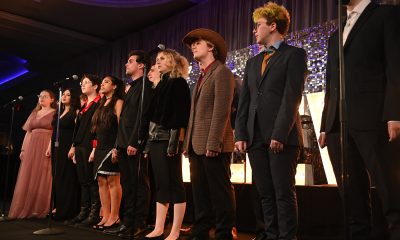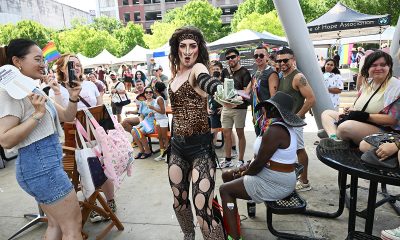a&e features
John Waters teases ‘Polyester’ reissue
Baltimore native claims no children were hurt making his films
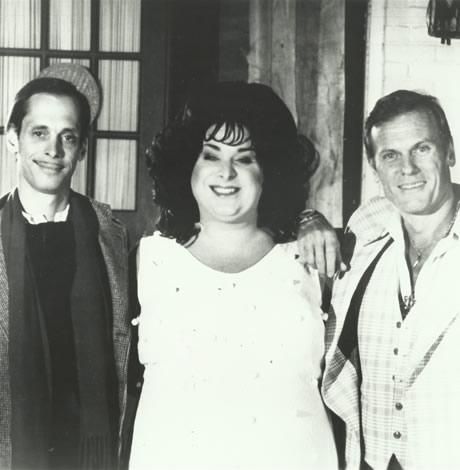
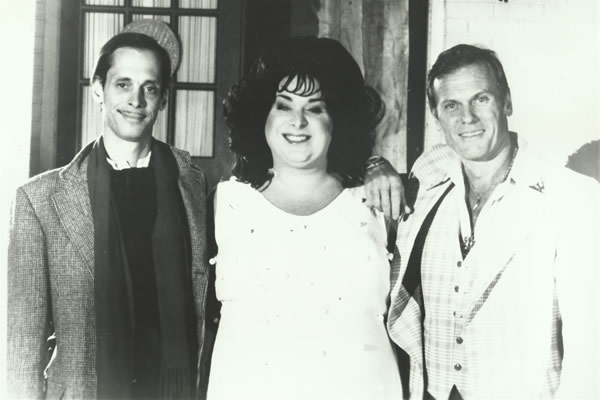
John Waters, Divine and Tab Hunter on the set of ‘Polyester’ in 1981. The camp classic will be reissued in a deluxe DVD and Blu-ray edition by The Criterion Collection in 2019. (Blade archives photo courtesy New Line Cinema)
“Polyester” is the next John Waters movie that will be released on DVD and Blu-ray and the Baltimore-based filmmaker is hoping an updated version of his Odorama card will go along with it.
“I want to add the 11th Odorama odor: Wig odor,” Waters told an audience in New York City at a Q&A last month. “glue and sweat.”
Appearing at the IFC Center for sold-out screenings of “Hairspray” and “Female Trouble,” Waters confirmed that “Polyester” will be restored and distributed in 2019 as part of The Criterion Collection, following re-releases of “Multiple Maniacs” and “Female Trouble.”
“They are going to do ‘Polyester’ next year, so I am excited about that,” Waters said. “They are a Class A company. I think they do an absolutely beautiful job.”
“Polyester,” starring Divine and Tab Hunter (sadly, both now dead), tells the story of suburban house frau Francine Fishpaw (Divine), stuck in a dreary marriage, and how her life changes after she meets dashing Todd Tomorrow (Hunter). Filmed in Greater Lutherville for $300,000 and released in 1981, it was part of Waters’ suburbia-based “Trash Trilogy,” along with “Hairspray” and “Cry Baby.”
“Polyester” became known for its Odorama card, which contained 10 scents that movie goers could scratch and sniff as they watched. They ranged from air freshener and roses to smelly sneakers and flatulence. Inspired by the Smell-O-Vision device from the 1960 movie “Scent of Mystery,” the Odorama card was touted with the lines: “It’ll blow your nose!” and “Smelling is Believing.”
Other original smells were: model airplane glue, pizza, gasoline, skunk, natural gas and new car smell. Glue was taken off the card when a LaserDisc version was released.
“Polyester” received positive reviews from critics such as The New York Times’ Janet Maslin.
“Ordinarily, Mr. Waters is not everyone’s cup of tea, but ‘Polyester’ … is not Mr. Waters’ ordinary movie,” Maslin wrote. “This time, the comic vision is so controlled and steady that Mr. Waters need not rely so heavily on the grotesque touches that make his other films such perennial favorites on the weekend Midnight Movie circuit. Here’s one that can just as well be shown in the daytime.”
Known as the “Pope of Trash” and “Sultan of Sleaze,” the openly gay filmmaker came to New York to celebrate the 30th anniversary of “Hairspray” and the 2018 re-release of “Female Trouble.” He had appeared the week before at a “Hairspray” screening and cast reunion in Los Angeles.
At the New York event, moderated by the entertainment writer Michael Musto, Waters was joined by Leslie Ann Powers, the actress who played Penny Pingleton; Joann Havrilla, who played Prudence Pingleton; and Holter Graham, who played I. Q. Jones. Waters said he hadn’t seen Powers in decades and thought she was hiding in the “‘Hairspray’ witness protection program.”
The filmmaker said “Hairspray,” which follows teenager Tracy Turnblad’s efforts to integrate a TV dance show in the 1960s, is “the gift that keeps on giving,” because there have been so many versions of it.
“I say it’s radical because it snuck up on Middle America,” Waters said. “Even racists like it. I’ve been paid to write the sequel two times. There’s been talk of ‘Hairspray on Ice,’ ‘Hairspray in Space.’ What’s left?”
The running joke in the movie is that the 300-pound drag actor Divine, who died in 1988 and played Tracy’s mother Edna, is actually a man but no one knows it except the audience.
In real life, Divine “had no desire to be a woman,” Waters said. “He wanted to be Godzilla. …We created Divine to scare hippies.”
Born Harris Glenn Milstead, Divine off-screen was nothing like Divine onscreen, Waters noted. “He was a kind, gentle man who was a pothead and liked to eat.”
Though he and Divine were good friends, Waters said, Divine eventually wanted to do more than John Waters movies, especially after the scene in “Pink Flamingos” where he ate dog poop.
“He got weary of being with me … because people couldn’t get over the whole eating-shit thing,” Waters said. “He got so sick of talking about that. … He wanted to get away from me and do things without me.”
During a separate Q&A session following the “Female Trouble” screening, Waters reported that none of the child actors in his movies was traumatized by the experience.
“All the kids in my movies turned out fine,” he said. “The little girl that I locked in a refrigerator (in Desperate Living)? She’s fine. … There was nothing weird or anything. They memorized their lines. They’re fine.”
“Female Trouble” focuses on Dawn Davenport (Divine), who turns to a life of crime after she didn’t get cha cha heels for Christmas, kills her daughter Taffy and ends up frying in the electric chair.
Waters said he originally wanted Divine to play both the mother and daughter but concluded it wouldn’t work because of Divine’s age. Instead, he had Divine play both the mother and the father, which means Divine rapes himself.
The famous line delivered by the late Edith Massey: “the world of the heterosexual is a sick and boring life,” had a double purpose aside from its comedic punch, Waters said.
“That was market testing. I wanted to see how many gay people were in the audience.”
Ever the name dropper, Waters said he loves the director Ingmar Bergman because “he had the first puke scene.” He said he met Elizabeth Taylor toward the end of her life and “she looked like Divine.” He said he considered casting Roseanne Barr as the lead in “Serial Mom,” back when she was “a complete liberal,” but eventually chose Kathleen Turner.
Waters said he used to visit courtrooms during criminal trials but can’t anymore “because people recognize me.” He disclosed that Dawn Davenport’s character was inspired in part by Alice Crimmins, a New York woman and Casey Anthony forerunner who was convicted of killing her two children in 1965.
Musto said he had a treat for Waters. “Big surprise,” he said. “Alice is here with us tonight!”
The conversation eventually came down, as it often does, to cha cha heels and Christmas.
Musto asked Waters if the dialogue about them — “Those aren’t the right kind. I told you cha cha heels, black ones!” and “Good girls don’t wear cha cha heels” — aren’t the most quoted lines from a John Waters movie.
Waters said the scene in which the Christmas tree falls over on Dawn’s mother was inspired by a time when a Christmas tree fell on his grandmother.
“I remember the handyman screaming, the maid crying and me being, ‘Is my present hurt?’ She wasn’t injured, but I was obsessed by it.”
He said a lot of his fans seem to have stories about falling Christmas trees.
“It’s usually dogs or liquor.”
Waters said his family always had real trees when he was growing up, never artificial, and his mother frowned on those who decorated with multi-colored lights.
“She was all white lights,” he said. “She would go around the neighborhood and look in windows” and make disparaging remarks about families with multi-colored lights.
Waters marvels that his movies are so embraced today since mainstream studios shunned them initially.
The Criterion Collection, which will distribute “Polyester,” is affiliated with Warner Brothers, one of the largest entertainment companies in America.
“Warner Brothers distributes all of mine now,” Waters said. “Who would have imagined?”
More John Waters fun!
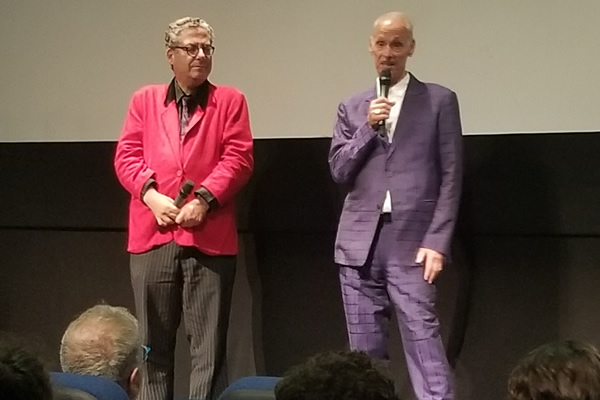
Michael Musto, left, with John Waters in New York on July 27. (Photo by Ed Gunts)
He’s no longer making new movies but there are still ways to enjoy the John Waters sensibility.
“John Waters: Indecent Exposure,” billed as the “first major retrospective of Baltimore native John Waters’ visual art,’ opens Oct. 7 at the Baltimore Museum of Art (10 Art Museum Drive, Baltimore) and runs through Jan. 6. The show will “examine the unapologetic cultural force’s influential career through more than 160 pieces of his work dating back to the early 1990s.” Details at artbma.org.
Waters makes his annual trek to the Birchmere (3701 Mount Vernon Ave., Alexandria) on Thursday, Dec. 20 for “A John Waters Christmas,” his comedy stand-up show. Tickets are $55. Details at birchmere.com.
a&e features
Visit Cambridge, a ‘beautiful secret’ on Maryland’s Eastern Shore
New organization promotes town’s welcoming vibe, LGBTQ inclusion
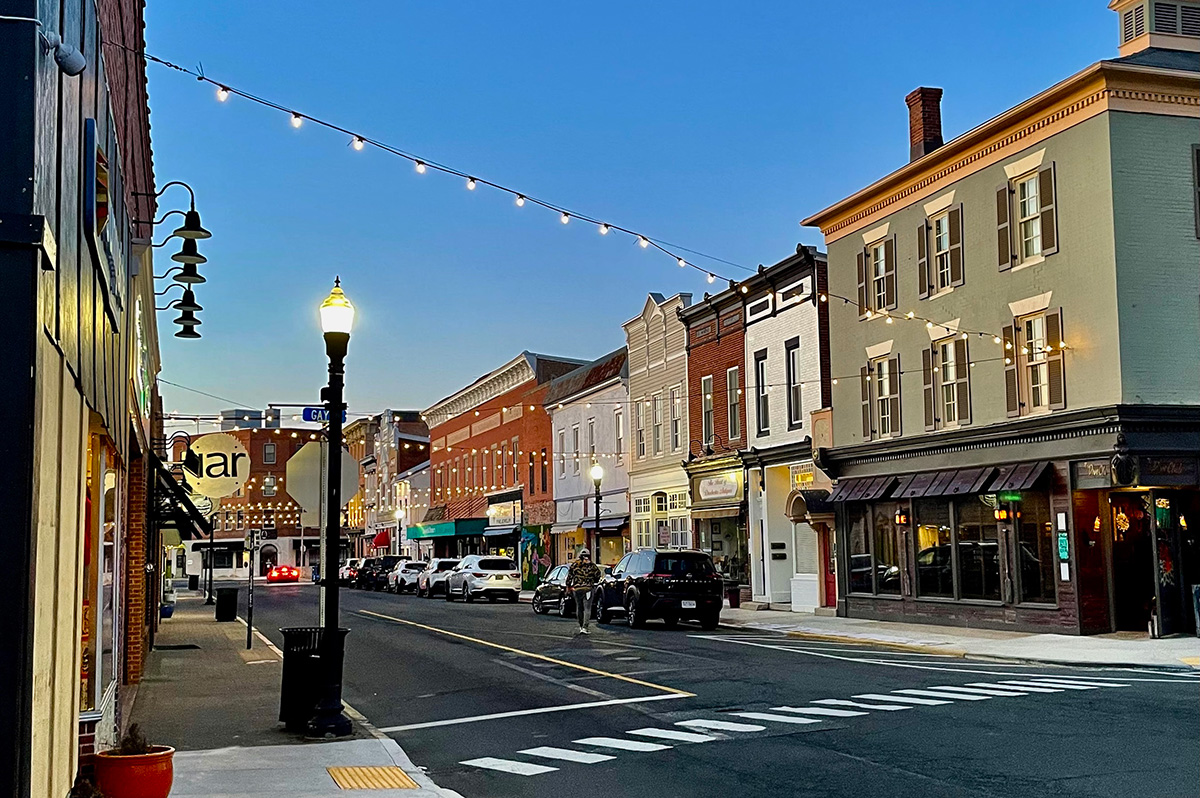
CAMBRIDGE, Md. — Driving through this scenic, historic town on Maryland’s Eastern Shore, you’ll be charmed by streets lined with unique shops, restaurants, and beautifully restored Victorian homes. You’ll also be struck by the number of LGBTQ Pride flags flying throughout the town.
The flags are a reassuring signal that everyone is welcome here, despite the town’s location in ruby red Dorchester County, which voted for Donald Trump over Kamala Harris by a lopsided margin. But don’t let that deter you from visiting. A new organization, Proudly Cambridge, is holding its debut Pride event this weekend, touting the town’s welcoming, inclusive culture.
“We stumbled on a beautiful secret and we wanted to help get the word out,” said James Lumalcuri of the effort to create Proudly Cambridge.
The organization celebrates diversity, enhances public spaces, and seeks to uplift all that Cambridge has to share, according to its mission statement, under the tagline “You Belong Here.”
The group has so far held informal movie nights and a picnic and garden party; the launch party is June 28 at the Cambridge Yacht Club, which will feature a Pride celebration and tea dance. The event’s 75 tickets sold out quickly and proceeds benefit DoCo Pride.
“Tickets went faster than we imagined and we’re bummed we can’t welcome everyone who wanted to come,” Lumalcuri said, adding that organizers plan to make “Cheers on the Choptank” an annual event with added capacity next year.
One of the group’s first projects was to distribute free Pride flags to anyone who requested one and the result is a visually striking display of a large number of flags flying all over town. Up next: Proudly Cambridge plans to roll out a program offering affirming businesses rainbow crab stickers to show their inclusiveness and LGBTQ support. The group also wants to engage with potential visitors and homebuyers.
“We want to spread the word outside of Cambridge — in D.C. and Baltimore — who don’t know about Cambridge,” Lumalcuri said. “We want them to come and know we are a safe haven. You can exist here and feel comfortable and supported by neighbors in a way that we didn’t anticipate when we moved here.”
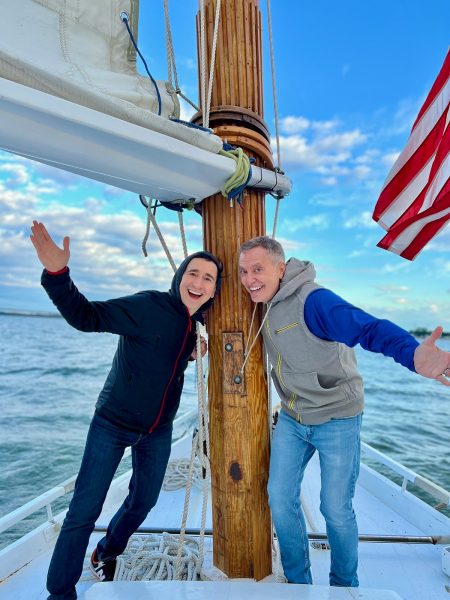
Lumalcuri, 53, a federal government employee, and his husband, Lou Cardenas, 62, a Realtor, purchased a Victorian house in Cambridge in 2021 and embarked on an extensive renovation. The couple also owns a home in Adams Morgan in D.C.
“We saw the opportunity here and wanted to share it with others,” Cardenas said. “There’s lots of housing inventory in the $300-400,000 range … we’re not here to gentrify people out of town because a lot of these homes are just empty and need to be fixed up and we’re happy to be a part of that.”
Lumalcuri was talking with friends one Sunday last year at the gazebo (affectionately known as the “gayzebo” by locals) at the Yacht Club and the idea for Proudly Cambridge was born. The founding board members are Lumalcuri, Corey van Vlymen, Brian Orjuela, Lauren Mross, and Caleb Holland. The group is currently working toward forming a 501(c)3.
“We need visibility and support for those who need it,” Mross said. “We started making lists of what we wanted to do and the five of us ran with it. We started meeting weekly and solidified what we wanted to do.”
Mross, 50, a brand strategist and web designer, moved to Cambridge from Atlanta with her wife three years ago. They knew they wanted to be near the water and farther north and began researching their options when they discovered Cambridge.
“I had not heard of Cambridge but the location seemed perfect,” she said. “I pointed on a map and said this is where we’re going to move.”
The couple packed up, bought a camper trailer and parked it in different campsites but kept coming back to Cambridge.
“I didn’t know how right it was until we moved here,” she said. “It’s the most welcoming place … there’s an energy vortex here – how did so many cool, progressive people end up in one place?”
Corey van Vlymen and his husband live in D.C. and were looking for a second home. They considered Lost River, W.Va., but decided they preferred to be on the water.
“We looked at a map on both sides of the bay and came to Cambridge on a Saturday and bought a house that day,” said van Vlymen, 39, a senior scientist at Booz Allen Hamilton. They’ve owned in Cambridge for two years.
They were drawn to Cambridge due to its location on the water, the affordable housing inventory, and its proximity to D.C.; it’s about an hour and 20 minutes away.
Now, through the work of Proudly Cambridge, they hope to highlight the town’s many attributes to residents and visitors alike.
“Something we all agree on is there’s a perception problem for Cambridge and a lack of awareness,” van Vlymen said. “If you tell someone you’re going to Cambridge, chances are they think, ‘England or Massachusetts?’”
He cited the affordability and the opportunity to save older, historic homes as a big draw for buyers.
“It’s all about celebrating all the things that make Cambridge great,” Mross added. “Our monthly social events are joyful and celebratory.” A recent game night drew about 70 people.
She noted that the goal is not to gentrify the town and push longtime residents out, but to uplift all the people who are already there while welcoming new visitors and future residents.
They also noted that Proudly Cambridge does not seek to supplant existing Pride-focused organizations. Dorchester County Pride organizes countywide Pride events and Delmarva Pride was held in nearby Easton two weeks ago.
“We celebrate all diversity but are gay powered and gay led,” Mross noted.
To learn more about Proudly Cambridge, visit the group on Facebook and Instagram.
What to see and do
Cambridge, located 13 miles up the Choptank River from the Chesapeake Bay, has a population of roughly 15,000. It was settled in 1684 and named for the English university town in 1686. It is home to the Harriet Tubman Museum, mural, and monument. Its proximity to the Blackwater National Wildlife Refuge makes it a popular stop for birders, drawn to more than 27,000 acres of marshland dubbed “the Everglades of the north.”
The refuge is walkable, bikeable, and driveable, making it an accessible attraction for all. There are kayaking and biking tours through Blackwater Adventures (blackwateradventuresmd.com).
Back in town, take a stroll along the water and through historic downtown and admire the architecture. Take in the striking Harriet Tubman mural (424 Race St.). Shop in the many local boutiques, and don’t miss the gay-owned Shorelife Home and Gifts (421 Race St.), filled with stylish coastal décor items.
Stop for breakfast or lunch at Black Water Bakery (429 Race St.), which offers a full compliment of coffee drinks along with a build-your-own mimosa bar and a full menu of creative cocktails.
The Cambridge Yacht Club (1 Mill St.) is always bustling but you need to be a member to get in. Snapper’s on the water is temporarily closed for renovations. RaR Brewing (rarbrewing.com) is popular for craft beers served in an 80-year-old former pool hall and bowling alley. The menu offers burgers, wings, and other bar fare.
For dinner or wine, don’t miss the fantastic Vintage 414 (414 Race St.), which offers lunch, dinner, wine tasting events, specialty foods, and a large selection of wines. The homemade cheddar crackers, inventive flatbreads, and creative desserts (citrus olive oil cake, carrot cake trifle) were a hit on a recent visit.
Also nearby is Ava’s (305 High St.), a regional chain offering outstanding Italian dishes, pizzas, and more.
For something off the beaten path, visit Emily’s Produce (22143 Church Creek Rd.) for its nursery, produce, and prepared meals.
“Ten minutes into the sticks there’s a place called Emily’s Produce, where you can pay $5 and walk through a field and pick sunflowers, blueberries, you can feed the goats … and they have great food,” van Vlymen said.
As for accommodations, there’s the Hyatt Regency Chesapeake Bay (100 Heron Blvd. at Route 50), a resort complex with golf course, spa, and marina. Otherwise, check out Airbnb and VRBO for short-term rentals closer to downtown.
Its proximity to D.C. and Baltimore makes Cambridge an ideal weekend getaway. The large LGBTQ population is welcoming and they are happy to talk up their town and show you around.
“There’s a closeness among the neighbors that I wasn’t feeling in D.C.,” Lumalcuri said. “We look after each other.”
a&e features
James Baldwin bio shows how much of his life is revealed in his work
‘A Love Story’ is first major book on acclaimed author’s life in 30 years
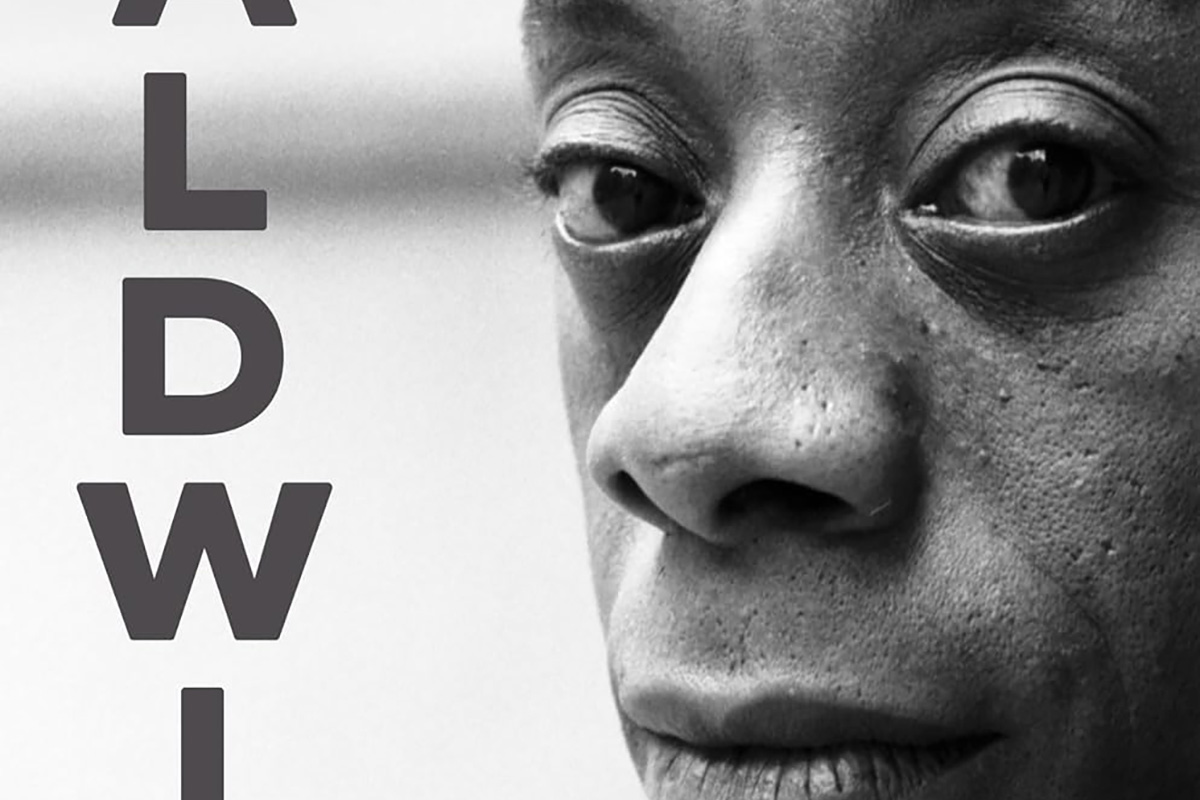
‘Baldwin: A Love Story’
By Nicholas Boggs
c.2025, FSG
$35/704 pages
“Baldwin: A Love Story” is a sympathetic biography, the first major one in 30 years, of acclaimed Black gay writer James Baldwin. Drawing on Baldwin’s fiction, essays, and letters, Nicolas Boggs, a white writer who rediscovered and co-edited a new edition of a long-lost Baldwin book, explores Baldwin’s life and work through focusing on his lovers, mentors, and inspirations.
The book begins with a quick look at Baldwin’s childhood in Harlem, and his difficult relationship with his religious, angry stepfather. Baldwin’s experience with Orilla Miller, a white teacher who encouraged the boy’s writing and took him to plays and movies, even against his father’s wishes, helped shape his life and tempered his feelings toward white people. When Baldwin later joined a church and became a child preacher, though, he felt conflicted between academic success and religious demands, even denouncing Miller at one point. In a fascinating late essay, Baldwin also described his teenage sexual relationship with a mobster, who showed him off in public.
Baldwin’s romantic life was complicated, as he preferred men who were not outwardly gay. Indeed, many would marry women and have children while also involved with Baldwin. Still, they would often remain friends and enabled Baldwin’s work. Lucien Happersberger, who met Baldwin while both were living in Paris, sent him to a Swiss village, where he wrote his first novel, “Go Tell It on the Mountain,” as well as an essay, “Stranger in the Village,” about the oddness of being the first Black person many villagers had ever seen. Baldwin met Turkish actor Engin Cezzar in New York at the Actors’ Studio; Baldwin later spent time in Istanbul with Cezzar and his wife, finishing “Another Country” and directing a controversial play about Turkish prisoners that depicted sexuality and gender.
Baldwin collaborated with French artist Yoran Cazac on a children’s book, which later vanished. Boggs writes of his excitement about coming across this book while a student at Yale and how he later interviewed Cazac and his wife while also republishing the book. Baldwin also had many tumultuous sexual relationships with young men whom he tried to mentor and shape, most of which led to drama and despair.
The book carefully examines Baldwin’s development as a writer. “Go Tell It on the Mountain” draws heavily on his early life, giving subtle signs of the main character John’s sexuality, while “Giovanni’s Room” bravely and openly shows a homosexual relationship, highly controversial at the time. “If Beale Street Could Talk” features a woman as its main character and narrator, the first time Baldwin wrote fully through a woman’s perspective. His essays feel deeply personal, even if they do not reveal everything; Lucian is the unnamed visiting friend in one who the police briefly detained along with Baldwin. He found New York too distracting to write, spending his time there with friends and family or on business. He was close friends with modernist painter Beauford Delaney, also gay, who helped Baldwin see that a Black man could thrive as an artist. Delaney would later move to France, staying near Baldwin’s home.
An epilogue has Boggs writing about encountering Baldwin’s work as one of the few white students in a majority-Black school. It helpfully reminds us that Baldwin connects to all who feel different, no matter their race, sexuality, gender, or class. A well-written, easy-flowing biography, with many excerpts from Baldwin’s writing, it shows how much of his life is revealed in his work. Let’s hope it encourages reading the work, either again or for the first time.
a&e features
Looking back at 50 years of Pride in D.C
Washington Blade’s unique archives chronicle highs, lows of our movement
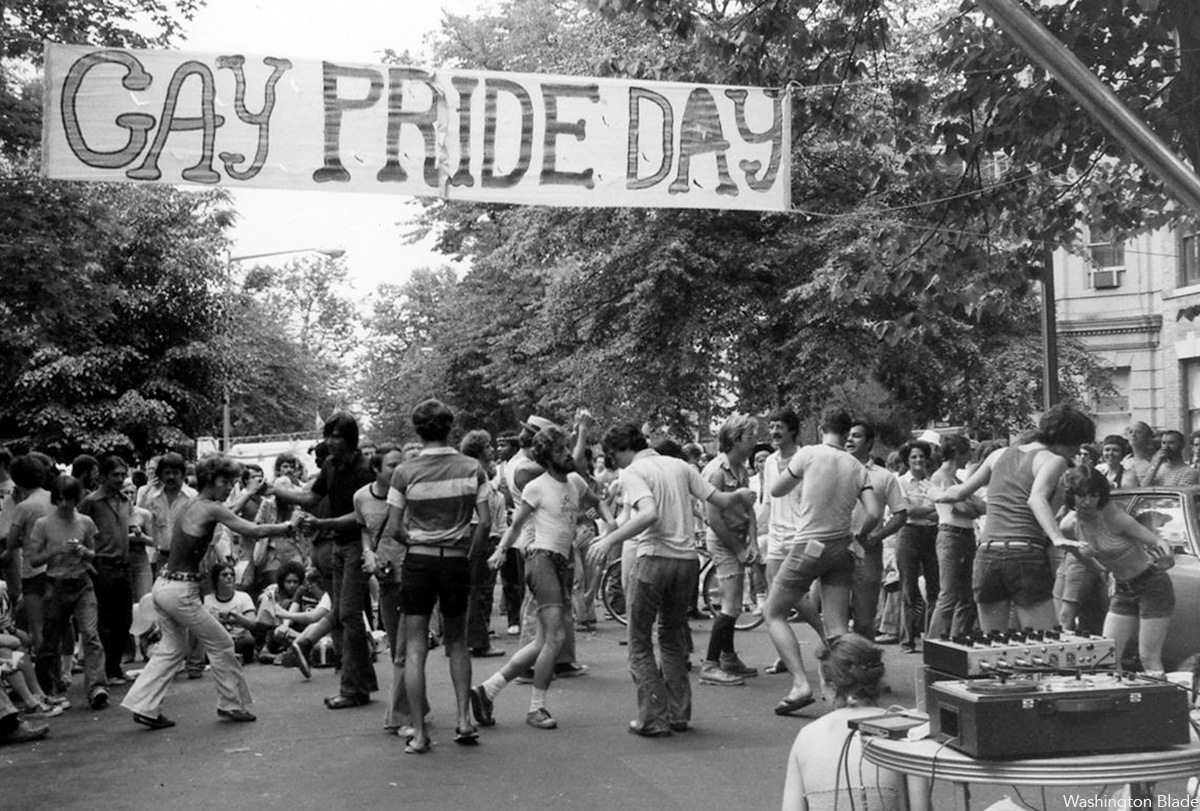
To celebrate the 50th anniversary of LGBTQ Pride in Washington, D.C., the Washington Blade team combed our archives and put together a glossy magazine showcasing five decades of celebrations in the city. Below is a sampling of images from the magazine but be sure to find a print copy starting this week.
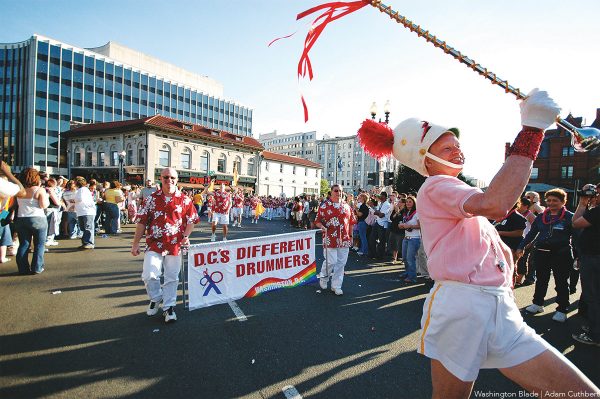
The magazine is being distributed now and is complimentary. You can find copies at LGBTQ bars and restaurants across the city. Or visit the Blade booth at the Pride festival on June 7 and 8 where we will distribute copies.
Thank you to our advertisers and sponsors, whose support has enabled us to distribute the magazine free of charge. And thanks to our dedicated team at the Blade, especially Photo Editor Michael Key, who spent many hours searching the archives for the best images, many of which are unique to the Blade and cannot be found elsewhere. And thanks to our dynamic production team of Meaghan Juba, who designed the magazine, and Phil Rockstroh who managed the process. Stephen Rutgers and Brian Pitts handled sales and marketing and staff writers Lou Chibbaro Jr., Christopher Kane, Michael K. Lavers, Joe Reberkenny along with freelancer and former Blade staffer Joey DiGuglielmo wrote the essays.
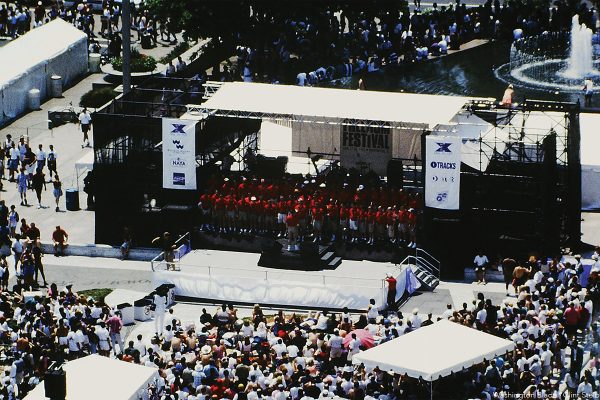
The magazine represents more than 50 years of hard work by countless reporters, editors, advertising sales reps, photographers, and other media professionals who have brought you the Washington Blade since 1969.
We hope you enjoy the magazine and keep it as a reminder of all the many ups and downs our local LGBTQ community has experienced over the past 50 years.
I hope you will consider supporting our vital mission by becoming a Blade member today. At a time when reliable, accurate LGBTQ news is more essential than ever, your contribution helps make it possible. With a monthly gift starting at just $7, you’ll ensure that the Blade remains a trusted, free resource for the community — now and for years to come. Click here to help fund LGBTQ journalism.
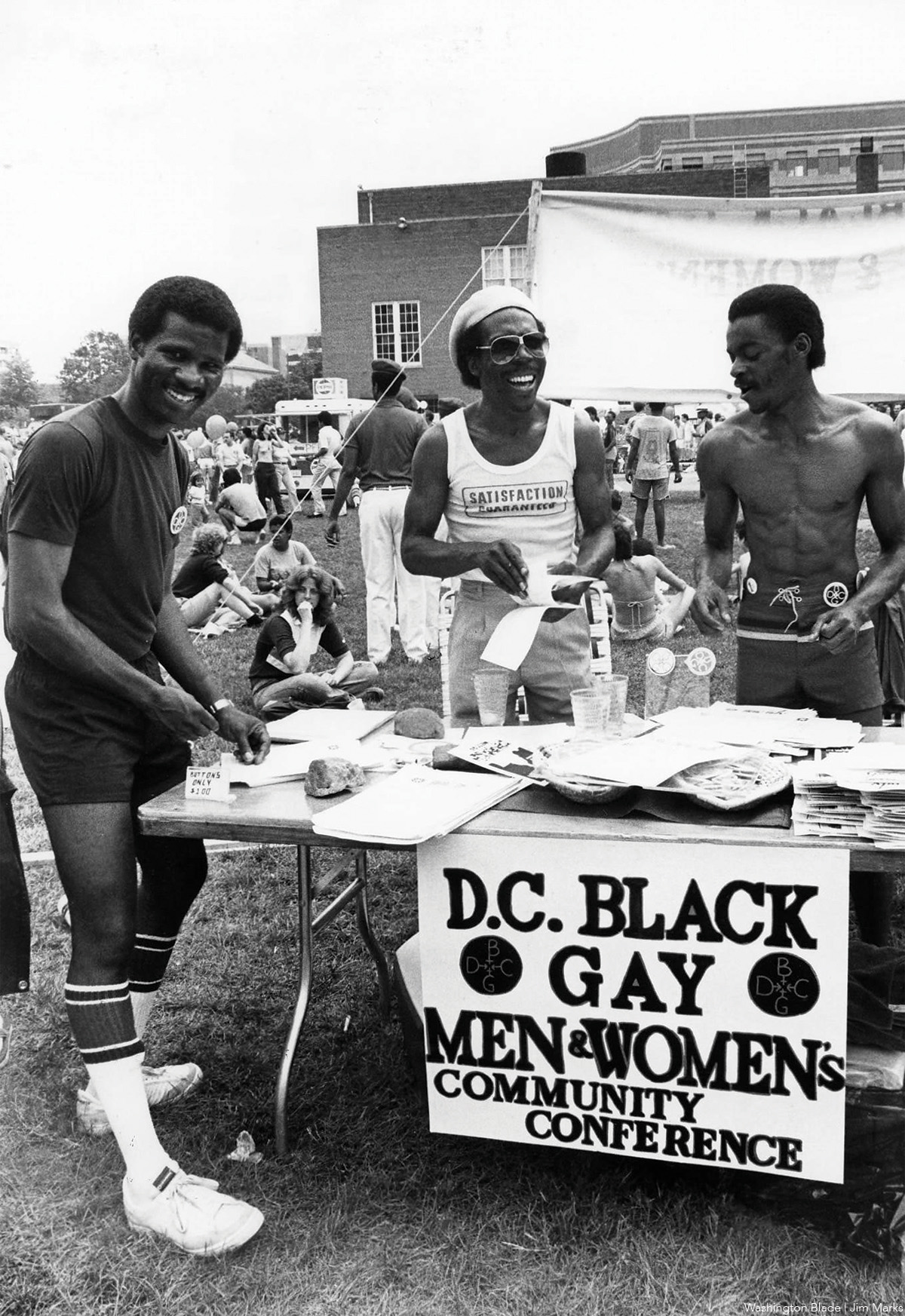
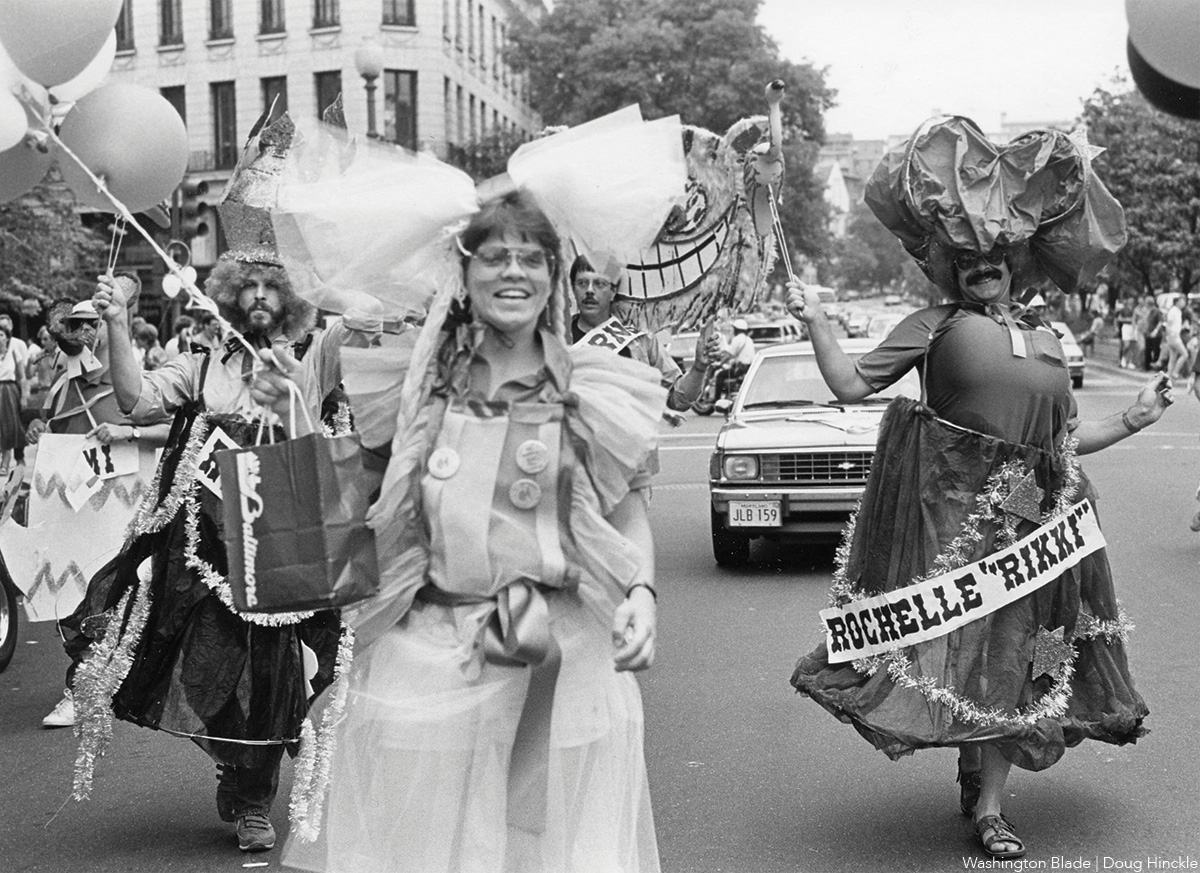
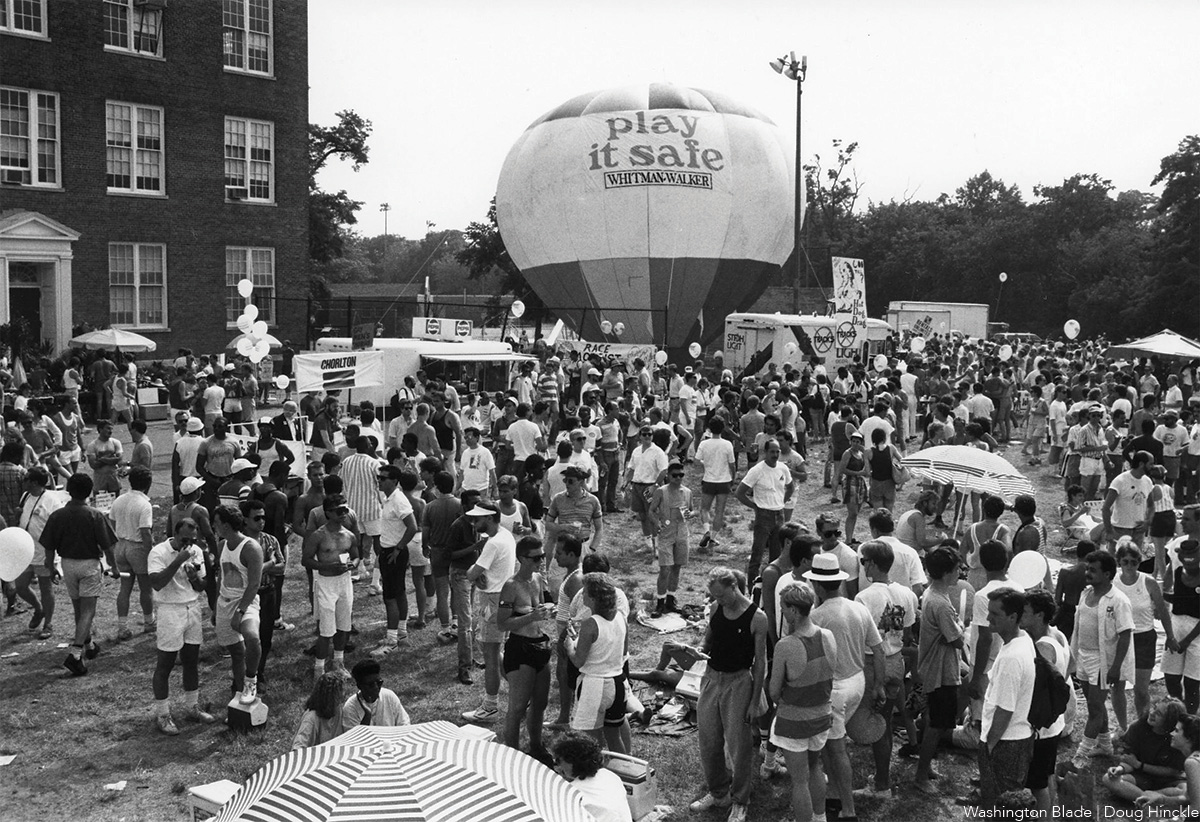
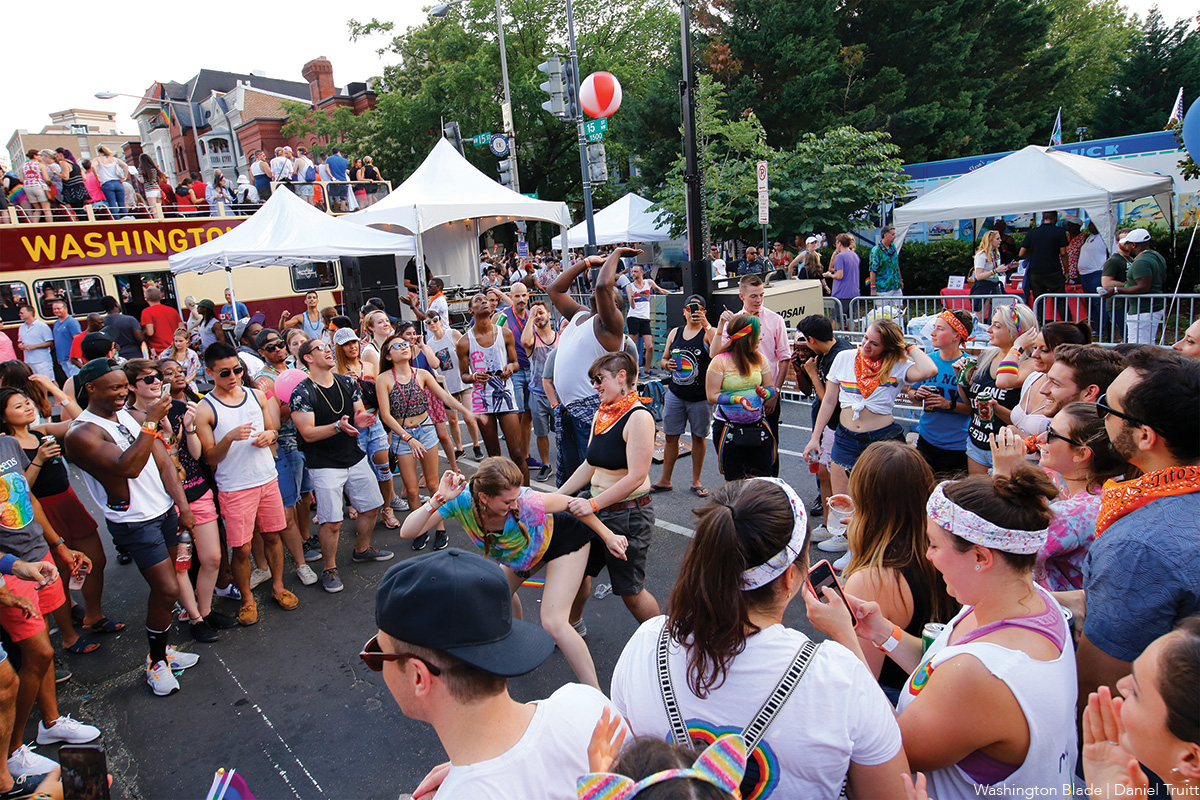
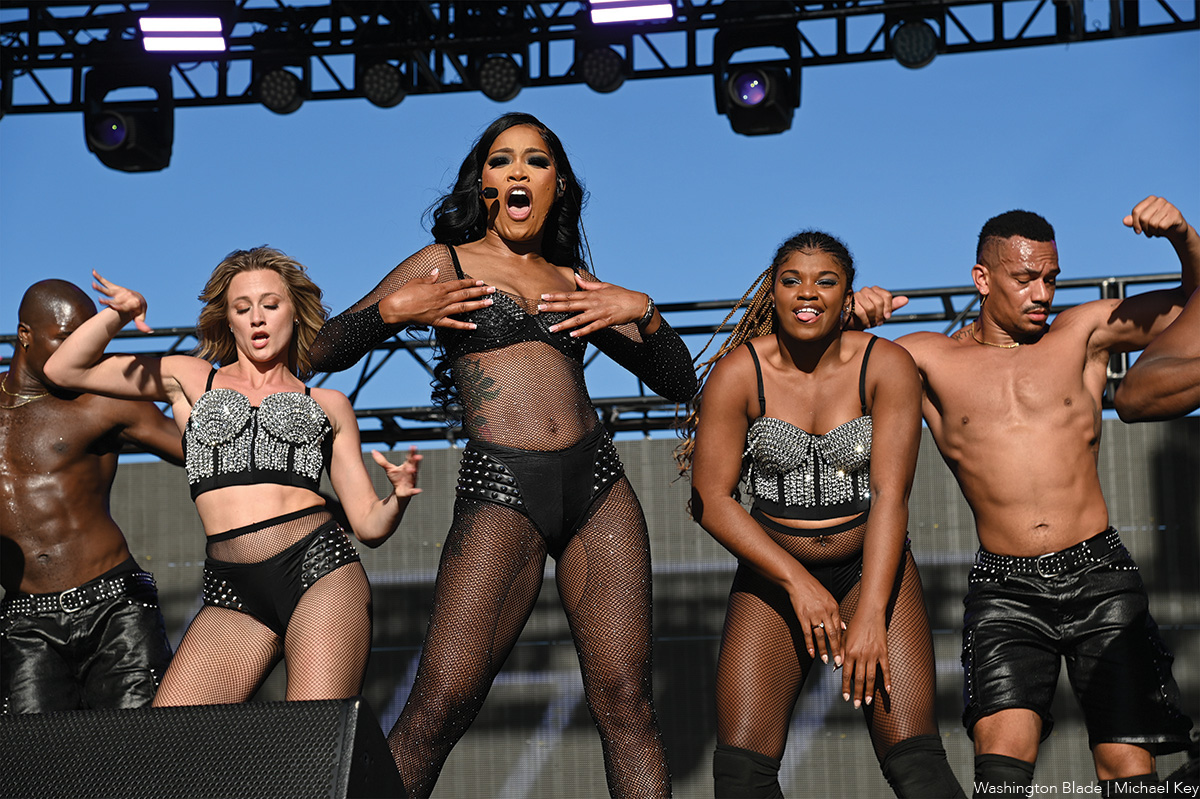
-
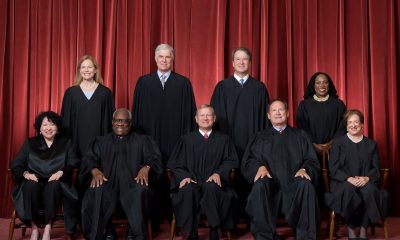
 U.S. Supreme Court5 days ago
U.S. Supreme Court5 days agoSupreme Court upholds ACA rule that makes PrEP, other preventative care free
-
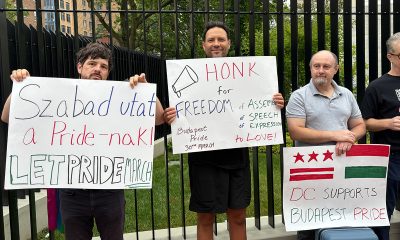
 District of Columbia5 days ago
District of Columbia5 days agoActivists protest outside Hungarian Embassy in DC
-
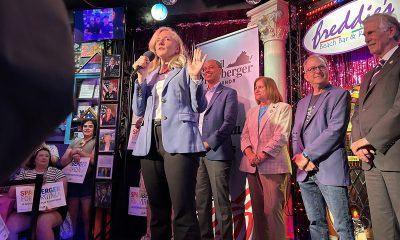
 Virginia4 days ago
Virginia4 days agoSpanberger touts equality, reproductive rights in Arlington
-
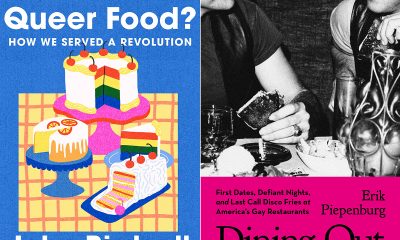
 Books4 days ago
Books4 days agoTwo new books on dining out LGBTQ-style

